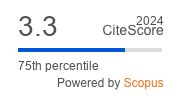Article | Open Access
Responding to Clients’ Descriptions of Experiential Inaccessibility in Multiprofessional Team Meetings
| Views: | 544 | | | Downloads: | 347 |
Abstract: This article scrutinises clients’ descriptions of experiential inaccessibility and the ways they were attended to in multiprofessional meetings that integrated clients, various professionals, and “experts by experience.” The research’s theoretical framework was the concept of experiential (in)accessibility and studies concerning the premises and dynamics of interactions in multiprofessional meetings. Data consisted of seven audio‐recorded multiprofessional team meetings with six clients in a welfare centre located in a large Finnish city. The analytical focus was the different kinds of interactional strategies that are used when responding to clients’ descriptions of experiential inaccessibility, which were related to the ways they had been treated, how they did not access the services they needed, or how they did not want the offered services because of their own or their close one’s previous negative experiences or stigmatisation. Their descriptions were addressed differently through a variety of interactional strategies. They were mostly accepted by the other participants, but their experiences were also negotiated and, in some cases, bypassed or not accepted. Finally, consideration was given to whether the multiprofessional team meetings advanced the accessibility and social inclusion of the clients or whether they had become settings for further negative experiences.
Keywords: experience; inaccessibility; interaction; multiprofessional; team meetings
Published:
© Jenni-Mari Räsänen. This is an open access article distributed under the terms of the Creative Commons Attribution 4.0 license (http://creativecommons.org/licenses/by/4.0), which permits any use, distribution, and reproduction of the work without further permission provided the original author(s) and source are credited.


